
Want to learn how to create a personal blog and make money from it?
You’re in the right place because below, you’ll learn step-by-step how to start a personal blog and turn it into a successful venture. Plus, you’ll discover everything you need to know, including:
- Choosing your ideal niche
- Tips on optimizing your blog for SEO and leveraging social media
- Strategies for engaging with niche communities
- Ways to monetize your blog – both directly and indirectly
- Examples of successful personal blogs for inspiration
- And more!
So, let’s get the party started.
In This Guide:
- What is a Personal Blog?
- Why Start a Personal Blog?
- Step 1: Choose Your Personal Blogging Niche
- Step 2: Choose Your Host & Domain Name
- Step 3: Set Up and Design Your Blog
- Step 4. Add Essential Features and Pages
- Step 5. Preview and Publish
- Step 6. Ongoing Updates and Site Maintenance
- Tips for Creating Content
- Can Personal Blogs Make Money?
- How to Promote Your Personal Blog
- Personal Blog Examples
- What Makes a Personal Blog Successful?
- The Future of Personal Blogging?
What is a Personal Blog?
Let’s start by clarifying what “Personal Blog” means in this article.
A personal blog is an online website where people publish their thoughts, experiences, and interests.
Personal bloggers typically write in an informal, first-person style, like a journal – making their writing personal and relatable.
Like other types of blogs, they’re usually hosted on blog platforms like WordPress, Blogger, or Wix. (We will elaborate on this in more detail later in the article.)
While a business blog tends to focus on its readers’ needs and wants, personal blogs are often written around the blogger’s interests (but still meant to help readers).
Both can make money, and we’ll look at how a personal blog can do this later.
However, one of the easiest ways to think of this type of blog is that it’s like a virtual journal, focusing on your life, personal insights, hobbies, and passions.

Why Start a Personal Blog?
There are plenty of reasons to start a personal blog. Here are a few of the most common reasons:
Credibility
By credible, I mean reliable, knowledgeable, and truthful.
If you regularly create and share valuable content on a personal blog, you can build a great reputation online and become a trusted source of insights.
Consider this real-world application of a personal blog: Employers often Google job applicants to learn more about them.
Imagine a potential employer Googles a candidate and finds a high-quality personal blog full of insightful content related to the industry in which they work.
That could give a strong advantage over applicants without a digital footprint or online presence.
Control and Ownership of Your Personal Brand
LinkedIn, Facebook, and Instagram can be great for building a personal brand. But you don’t own those platforms.
Any changes these platforms make to their terms, conditions, or features will impact your content.
For example, Facebook used a feature called Notes, which allowed users to create and share longer, blog-like posts with formatting options like headers, bullet points, and embedded images.
But in 2020, Facebook decided to discontinue this feature.
This means that people who had been relying on Facebook Notes for their personal branding had to find alternatives elsewhere.
So, having your own personal blog saves you from this risk.
Unlike social media, where your content can be moderated or filtered by guidelines, a personal blog on your own domain allows you to present your content exactly as you intend.
Why? Because you own it!
Self-Expression
As I have shared, a personal blog allows you to share your thoughts, experiences, and perspectives using an online creative outlet.
By writing about your life, you can understand yourself and your emotions better.

And by sharing it online, you might even find that it helps you build confidence.
Connecting with Others
Blogging can help build connections with like-minded people around the world.
You might even find yourself building a community of people who can relate to, or appreciate your opinions, stories, and ideas.
One easy way to do this is to include comments and social features on your blog. This way, people can engage with you, and you can reply to their comments and questions.
Develop New Skills
“Practice makes perfect.”
That rule also applies to writing.
By writing regularly on a personal blog, you’re going to become a better writer.
Depending on what you choose to blog about, you might also improve in other areas, such as photography, coding, cooking, or even arts and crafts.
At the same time, setting up a personal blog will help you develop some basic web design skills. (We’ll provide a basic walkthrough about this further down in this article.)
And finally, a personal blog can also develop your entrepreneurial and money-making skills.
So, let’s get into it!
How to Start a Personal Blog?
If you’ve made it this far, you’re serious about personal blogs.
So, let’s get to an easy six-step guide to starting a personal blog.
Step 1: Choose Your Personal Blogging Niche
What niche are you passionate about that you’ll want to be connected to your online identity?
- Personal finance?
- Making money online?
- Fashion?
- Travel?
Choose wisely!
However, I strongly suggest taking a strategic approach to Identify a potentially profitable niche. That approach should consider your passions, expertise, and market demand.
Here’s how to do it:
Reflect on Your Interests and Passions
Start by brainstorming blog post ideas that genuinely excite you. Consider your hobbies, personal experiences, and areas of expertise.
Word to the wise: you want to choose a niche you can write about consistently. This is crucial.
What you don’t want to do is choose a topic you get bored writing about after three blog posts.
You should choose a topic you care about and can write about consistently and with.
Evaluate Market Demand
Research potential niches to determine their popularity and profitability.
Helpful blogging software like Google Trends, Semrush, or even browsing social media groups can identify trending topics and give you a sense of the competition.
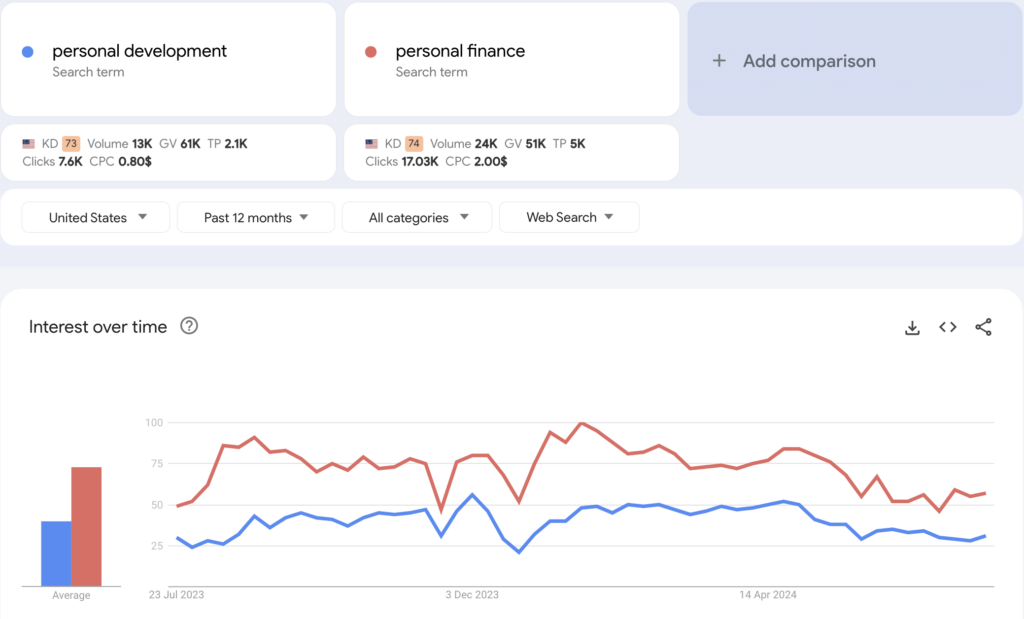
The best niches attract a significant audience and have a proven track record of success and earning potential.
Get Inspired by Other Successful Blogs
Get your magnifying glass out and start looking closely at existing blogs within your potential niches.
You’re going to want to be looking at their content, engagement levels, and monetization strategies.
Understanding what’s working for the best blogs can bring insights into how you can position your blog effectively. And you might also identify gaps (and opportunities) in the market.
Define Your Unique Angle
To stand out in a crowded niche, think about what unique perspective or expertise you can bring.
Consider how your personal story or experiences can differentiate your blog from others. This unique angle can help you connect with your audience on a deeper level.
You can’t have a personal blog without your personality being part of the equation.
Narrow Down Your Focus
Once you have a list of potential blog niche ideas, you will want to narrow your focus to a few that resonate most with you.
Group related topics and identify an “umbrella” category that encompasses them. This focused approach helps streamline your content creation and makes building authority in your chosen area easier.

Step 2: Choose Your Host & Domain Name
Your blog host stores your site files, making your site accessible via your domain name.
So, you’ll definitely want to choose a reliable hosting provider with solid uptime, affordable plans, and excellent customer support.
After securing hosting, you’ll need a domain name, which is your blog’s address, like www.yourblog.com.
You can buy domains from providers like GoDaddy or Namecheap.
But to take care of both needs…
We recommend Bluehost because it’s reliable, incredibly affordable, quick, and easy to start. Plus, as a Blog Tyrant reader, you can get a free domain name registration for one whole year
Exclusive offer for BlogTyrant readers
We have partnered up with Bluehost to get 60% off for our readers! You also get to register a FREE domain for a year which normally costs around $14.99 per year.
Claim this Exclusive Bluehost offerJust note that you’ll definitely want to consider your end goal and long-term vision of your blog when choosing a domain name.
Why?
Because using your name in the domain name (e.g., www.johnnylemar.com) may limit future growth and your ability to sell the site if it becomes successful and you want to ride off into the sunset.
Meanwhile, a domain with a brandable name offers more flexibility and can be easier to flip.
Ultimately, the best choice depends on your long-term vision for the blog.
Step 3: Set Up and Design Your Blog
There are many options for setting up and designing your personal blog.
I recommend WordPress as a blogging platform because it’s easy to use, highly customizable, and helps your blog rank well in search engines.
While WordPress has many templates to choose from, SeedProd stands out because it is super easy to use and offers many customization options.
With SeedProd, you can easily create custom blog layouts and designs without any coding skills. It’s perfect for beginners and allows for professional results.
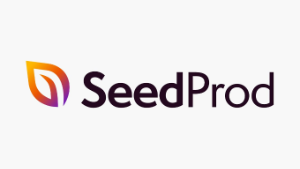
- Easy-to-use drag and drop builder
- Real-time visual live editor
- 180+ page templates
- 120+ pre-built WordPress themes
- Pre-made content blocks
- Save and reuse pages and elements
- Super fast in performance
- Built-in coming soon and maintenance mode
- Access controls to decide who can and can’t see specific pages
- Works with any WordPress theme
- And more…
- Only for WordPress
- The free version is limited
SeedProd is the #1 drag and drop website builder plugin for WordPress. Over 1 million creatives and professionals use it to create custom WordPress themes, layouts, and landing pages for their projects.
Ease of Use:
SeedProd is the easiest and quickest way to create custom pages and layouts for WordPress. With its drag and drop visual builder, you can simply click any element and place it exactly where you want on your page.
Plus, you’re able to see the changes you make in real-time with the visual editor. You can even revert back to any previously saved point with 1 click.
Design:
SeedProd comes with 300+ stunning, professionally designed templates to help you get started. It offers templates for sales pages, newsletter sign up pages, webinar landing pages, thank you pages, coming soon pages, maintenance mode pages, 404 pages, and more.
You can add pre-made blocks to your pages like email opt-in forms, contact forms, countdown timers, social profiles, buttons, and so much more. And it’s super easy to customize any block or element just by clicking on it.
Features:
| Email Marketing Integration: | Yes |
| Responsive and Mobile Friendly: | Yes |
| Spam Protection: | Yes |
| Domain Mapping: | Yes |
| Pricing: | $39.50 – $239.60/year (Free Version Available) |
So here is how to get started:
Installation and Setup
The first step is to install WordPress.
Next, install SeedProd.
After downloading, go to your WordPress dashboard, navigate to Plugins > Add New, and upload the SeedProd plugin file. After installation, activate the plugin.
Enter License Key: If you purchased the Pro version, you will need to enter your license key. You can do this in the SeedProd settings within your WordPress dashboard.
Choose a Template
Once SeedProd is activated, go to SeedProd > Theme Builder.
Here, you can choose from a variety of pre-designed templates or start from scratch. Selecting a starter theme will automatically generate all necessary parts of your theme.
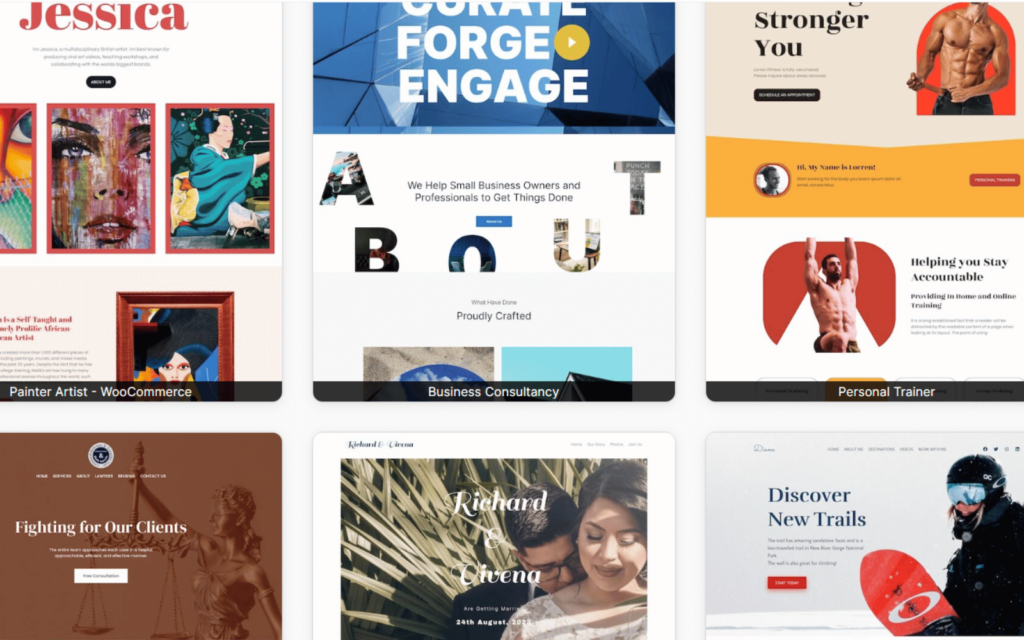
Customize Your Theme
Use the Drag-and-Drop Builder: Click on any template part (like headers, footers, or pages) to edit its design. You can adjust colors, fonts, and layouts without needing to write any code.
Add Elements: You can add a wide range of elements, such as text blocks, images, buttons, and widgets.
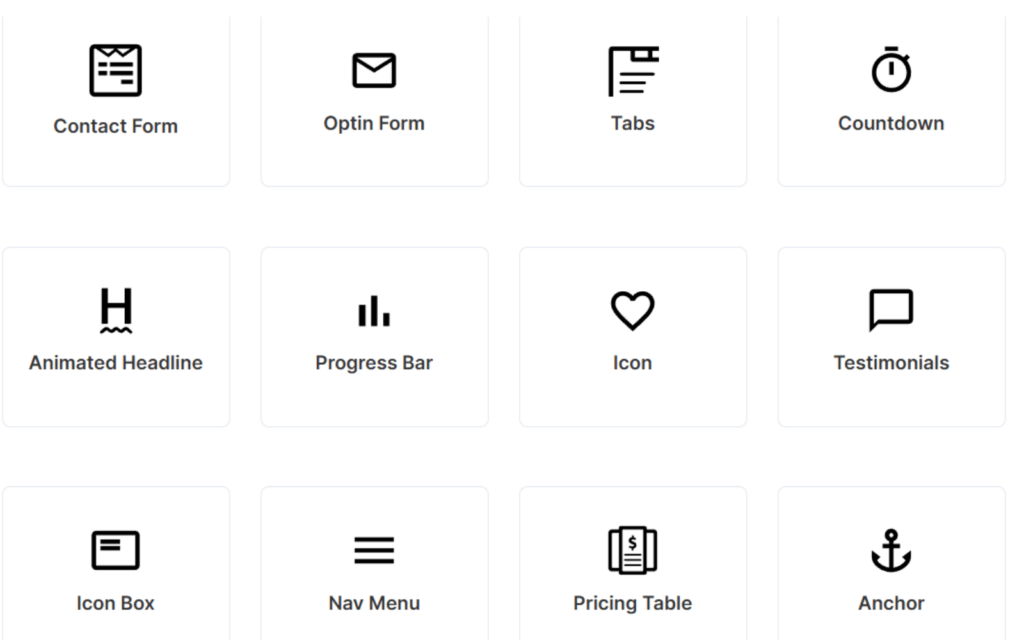
This flexibility allows you to create a unique blog design that matches your brand.
Step 4. Add Essential Features and Pages
There are things every blog should include.
Here are what you need to think about going in:
- User-Friendly Navigation
A clear and intuitive menu and site structure lets visitors and search engine crawlers easily navigate your site and find content.
Keep your menu simple by including the most important pages, like Home, About, and Contact.
Organize categories and subcategories logically to help visitors find content easily.
This is important because it enhances user experience and pushes readers to explore more of your blog.
- Responsive Design
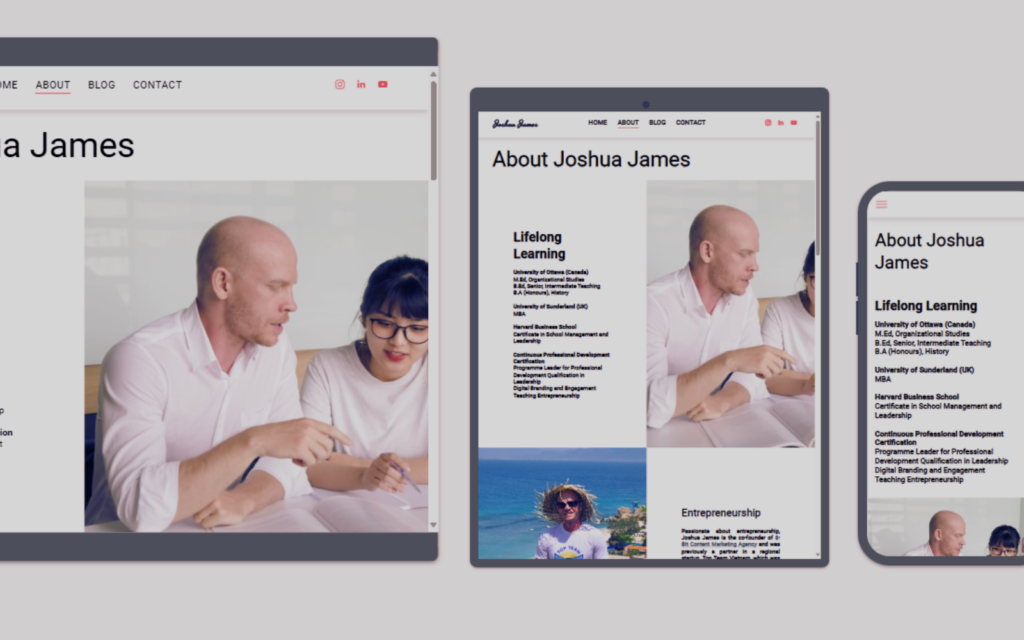
A responsive design ensures your blog looks great on all devices (desktops, tablets, and smartphones).
This is important as most visitors will probably access your content on mobile devices, so a seamless experience will help keep people reading your content.
- About Page
An About Us page introduces you to your readers, sharing your background, interests, and the purpose of your blog.
This personal touch builds trust and helps readers connect with you on a deeper level.
- Contact Information
You’ll want to provide a way for readers to contact you, whether through a contact form or email. This helps boost and foster communication and community.
And this can help a lot with networking and allows readers to reach out with questions or feedback.
Get inspired with the best Contact Us pages.
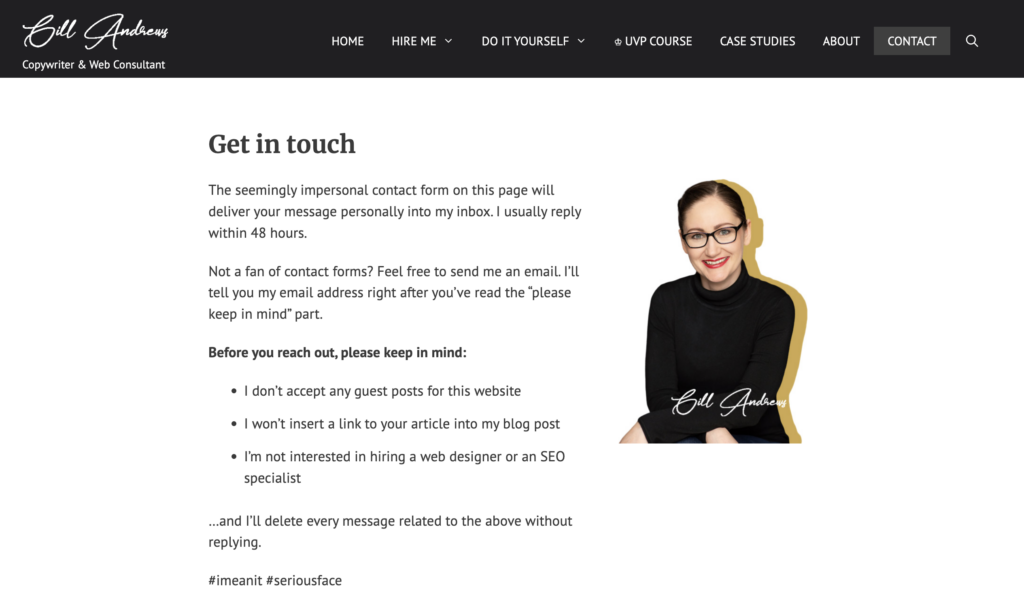
- Social Media Integration
Links to your social media profiles encourage readers to follow you on other platforms and share your content.
This feature is important for expanding your reach and building an online community around your blog.
- Comment Section
Enabling blog comments can be helpful because it allows readers to engage with your content and share their thoughts.
Interaction is important for building a blogging community and encouraging discussions around your topics. (Just be sure to check each comment before allowing them on the page.)
- Categories and Tags
Organizing your blog posts into categories and using tags helps readers navigate your content more easily.
This structure improves user experience and makes it simpler for visitors to find related blog posts.
- Search Engine Optimization (SEO) Features
If you want people to find you, you will definitely need to incorporate SEO best practices.
These will include things like meta tags and alt text for images and doing keyword research.
This is a comprehensive topic that needs serious planning to be done right – so be sure to check out our guide to SEO for bloggers.
- Content Archive
As you publish more blog content, it will be helpful to have an archive of past blog posts organized by date or category, which will help readers discover older content.
This feature is important for showcasing the breadth of your work and keeping your blog dynamic.
(Tip: It’s also helpful to add a search bar to your site for easy navigation of key terms. Check out our list of the best WordPress search plugins here)
- Visual Elements
High-quality images, infographics, and videos can enhance your blog posts and make them more engaging (and you may also be interested in learning how to start a vlog).
Visual elements are important for breaking up text and capturing readers’ attention.
- Privacy Policy and Terms of Service
Including these legal documents is essential for transparency and compliance with regulations, especially if you collect user data.
This builds trust with your audience and protects you legally.
And many of these essential pages are great to link to in you site footer:
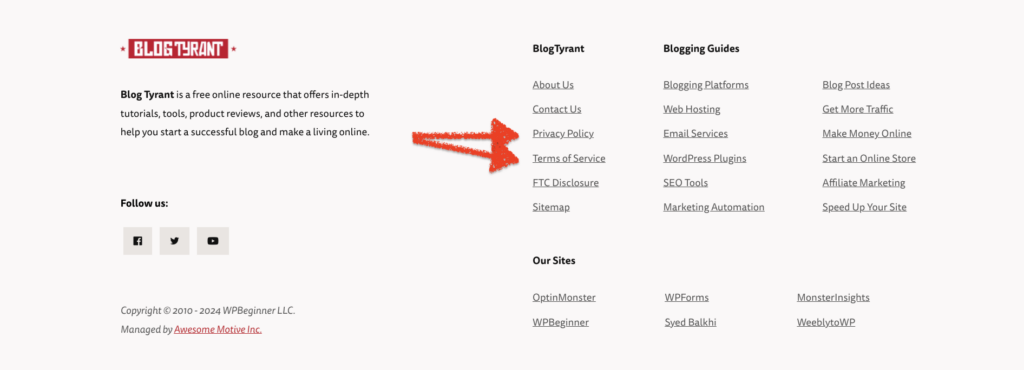
Step 5. Preview and Publish
Before hitting publish, preview your site to ensure everything looks and works as you want.
SeedProd provides a preview option to help you visualize your changes in real time.
Only once you are happy with your design can you enable your SeedProd theme by ticking the Enable SeedProd Theme option in the top right corner of the Theme Builder.
Step 6. Ongoing Updates and Site Maintenance
After you have launched your blog, you will want to continue to update and optimize your site as needed.
SeedProd allows you to make changes easily, ensuring your site remains fresh and engaging for visitors.
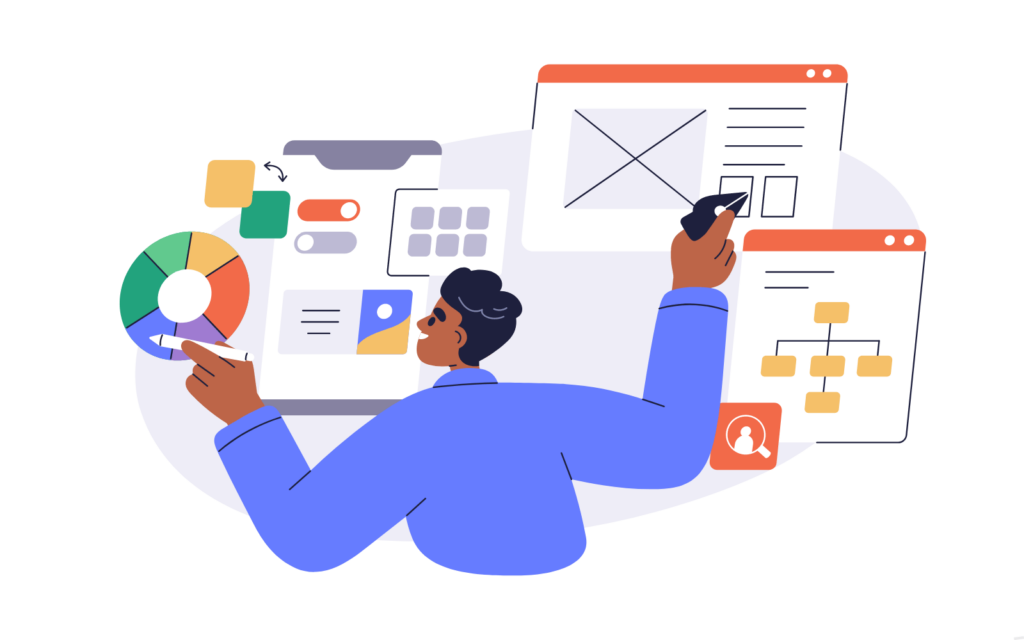
As time goes on, you’ll accumulate more pages for your site.
Here are some tips below to help your content stand out!
Tips for Creating Content
After you have your blog design up and online, you’ll need to have a steady flow of content.
And not just any content. Quality content.
Here’s what to think about as you start the process of creating content that will make your readers’ toes curl with delight:
Know Who You’re Writing For
Identify Your Target Audience: Consider their interests, challenges, and preferences. Tailoring your blog content to meet their needs will make it more relevant and engaging.
Use Reader Personas: Create profiles of your ideal readers to guide your writing style, tone, and blog topics.
Grab Attention
Use Strong, Descriptive Language: A great headline should be intriguing and give a clear idea of what the post is about.
Incorporate Keywords: This helps with SEO and clarifies what readers can expect.
Consider Lists or Questions: Titles like “5 Tips for…” or “How to…” often perform well because they promise valuable information, which is what people want. Give the people what they want.
Use Clear Formatting
Short Paragraphs: Keep paragraphs concise to improve readability. Remember, most site traffic comes from mobile. So, you’ll want to aim for 1-2 sentences per paragraph.
Headings and Subheadings: Break your content into sections with clear headings. This helps readers skim and find the information they need quickly.
Bullet Points and Lists: Use lists to present information clearly and make it easier to digest (like what we’re doing in this article).
Hook Your Readers
Start with a Question or Anecdote: Engage readers right away by addressing a common pain point or sharing a relatable story.
State the Value: Explain what the reader will gain from the post. This sets expectations and encourages them to keep reading.
Be Authentic
Write in Your Own Style: Your unique voice sets you apart – there’s likely no other like it. Don’t be afraid to let your personality shine through.
Use Conversational Language: Write as if you’re speaking to a friend. This makes your content more relatable and enjoyable to read.
Be Concise
Avoid Jargon: Simple language is almost always best for a blog. It ensures a wider audience will easily understand and make it easier for you to grow your audience.
Edit Ruthlessly: After writing, go back and remove unnecessary words or sentences. Aim for clarity and brevity.
A Picture is Worth a Thousand Words
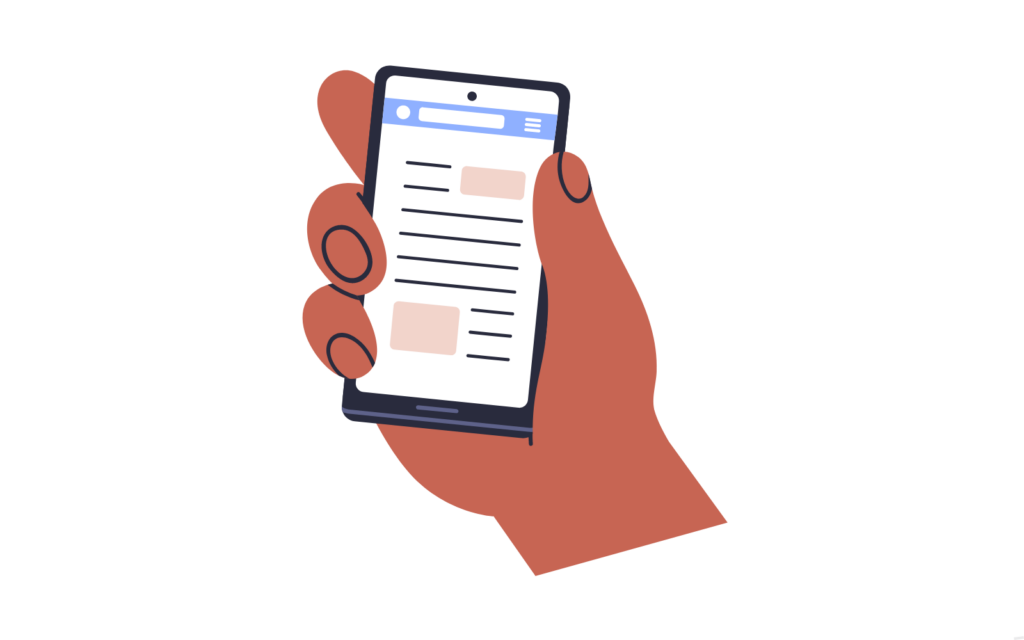
Use Images and Graphics: Visuals can break up text and make your posts more engaging. They also help illustrate your points.
Infographics and Charts: This can help make dynamic content that simplifies complex information and makes it more easily digestible.
Make It Relatable
Share Personal Experiences: Use anecdotes to illustrate your points. This makes your content more engaging and builds a connection with your readers.
Create a Narrative Arc: Structure your posts with a beginning, middle, and end to keep readers invested in your story.
Finish Strong
Summarize Key Points: Recap the main takeaways to reinforce what readers have learned.
Include a Call to Action (CTA): Encourage readers to comment, share, or take specific actions related to your content.
Ensure Quality
Take a Break: After writing, step away for a while before editing. This helps you see your work with fresh eyes.
Use Tools: Consider grammar and style-checking tools like Grammarly or Hemingway to catch errors and improve readability.
Develop a Routine
Write Regularly: Establish a consistent schedule (editorial calendar) to keep your content fresh and retain reader interest.
Experiment and Adapt: Pay attention to what resonates with your wider audience and adjust your writing style and topics accordingly.
Can Personal Blogs Make Money?
Yes, personal blogs can and often do make money directly (money earned directly from your blog) and indirectly (income earned from opportunities created from your blog).
Either way, you’re going to need commitment, effort, and time.
Your blog’s niche, audience engagement, and monetization strategies will usually be the deciding factors in its level of success.
Make Money Directly from Your Blog
Direct ways of making money from your blog include:
Selling Products
You can sell your own physical or digital products directly to consumers on a personal blog.
If you’re a teacher, you could sell your lesson plans, worksheets, or even your own online courses. These are examples of digital products.
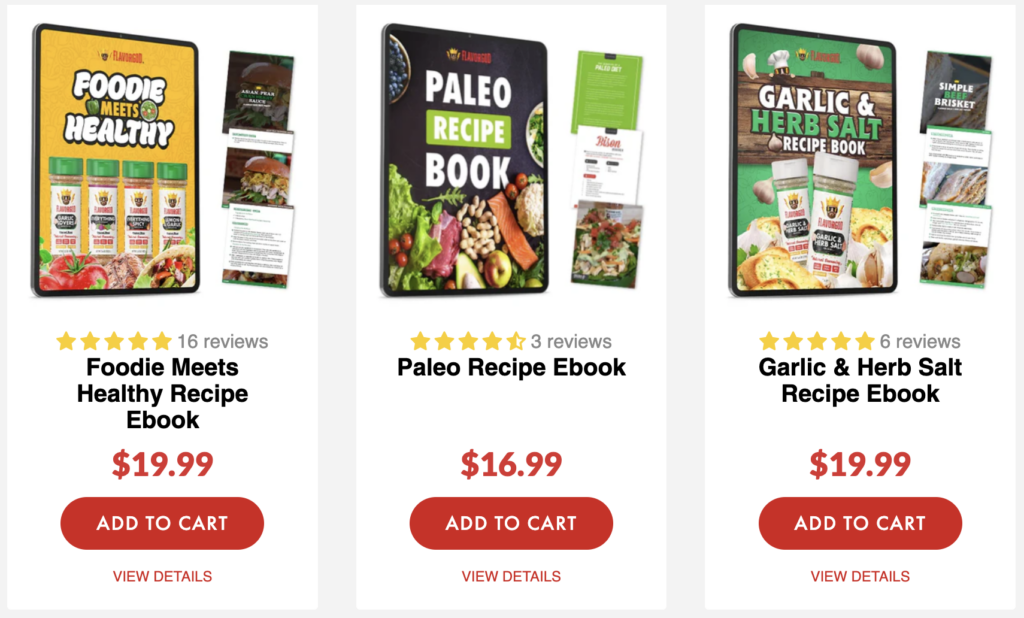
Got a recipe for some delicious cookies? You could sell some of those cookies from your blog. That would be an example of a physical product.
This is profitable when products align well with the blog’s content and audience interests.
Advertising
Once you start getting some traffic to your content, you can also earn money by displaying ads on your posts through networks like Google AdSense.
Your earnings will depend on views and clicks. So, considering how many people you can attract to your content and what you choose to write about, you could find yourself earning some decent money.
However, Google admits that it is hard to estimate how much income a person can earn from ads.
Affiliate Marketing:
This strategy involves joining the best affiliate programs in your niche to promote third-party products on your blog. You then make a commission on sales made via your unique links, known as affiliate links, from your site.
Affiliate marketing is a common and effective income stream for many bloggers in all sorts of niches.
Indirect Income
Indirect income comes from opportunities that arise because of your blog.
This includes:
Boosting Brand Recognition
If you’re a business owner, you can use a personal blog to share your expertise and insights related to your niche.
Creating helpful content for your readers can improve your brand recognition and build trust among potential customers.
Driving Organic Traffic
Blogging about topics relevant to your business that you can rank for (check out keyword research for beginners) can drive organic blog traffic from search engines to your website.
Optimizing your blog posts for search engines will make it easier for potential customers to find your business online.
How to Promote Your Personal Blog
To effectively promote your personal blog, you need to leverage the channels that best align with your niche and audience.
Social Media
Based on your niche, decide which social media platforms are the most relevant.
Should you be active on Instagram, LinkedIn, or X (formally known as Twitter)?
For visually-driven content, Instagram and Pinterest (depending on your niche) are ideal, while LinkedIn suits professional topics.
X is great for quick updates and engaging discussions.
Always be sure to build a strong presence on your chosen platforms to connect with your audience and share your blog posts regularly.
They can find you on social media if they can’t find you on Google.
SEO
Optimize your blog for search engines by targeting niche topics highly relevant to your personal brand.
Keyword research will help you find what your audience is searching for. You will need to incorporate those keywords naturally into your content.
Focus on creating high-quality, valuable posts that answer specific questions or solve problems, which will help improve your search engine rankings to get more organic traffic.
Niche Communities
Interacting with niche communities related to your blog’s focus can reap you some rich rewards.
To do this, I recommend joining and posting on niche forums and Facebook groups and participating in group discussions, contributing valuable insights.
This will help you build that credibility I talked about.
By actively participating in these communities – you can drive targeted blog traffic to your blog and establish yourself as an authority in your niche.
This will increase your blog’s visibility and help you connect with like-minded individuals.
Personal Blog Examples
If you’re looking for some inspiration, you can start by checking out the personal blogs below.
Syed Balkhi
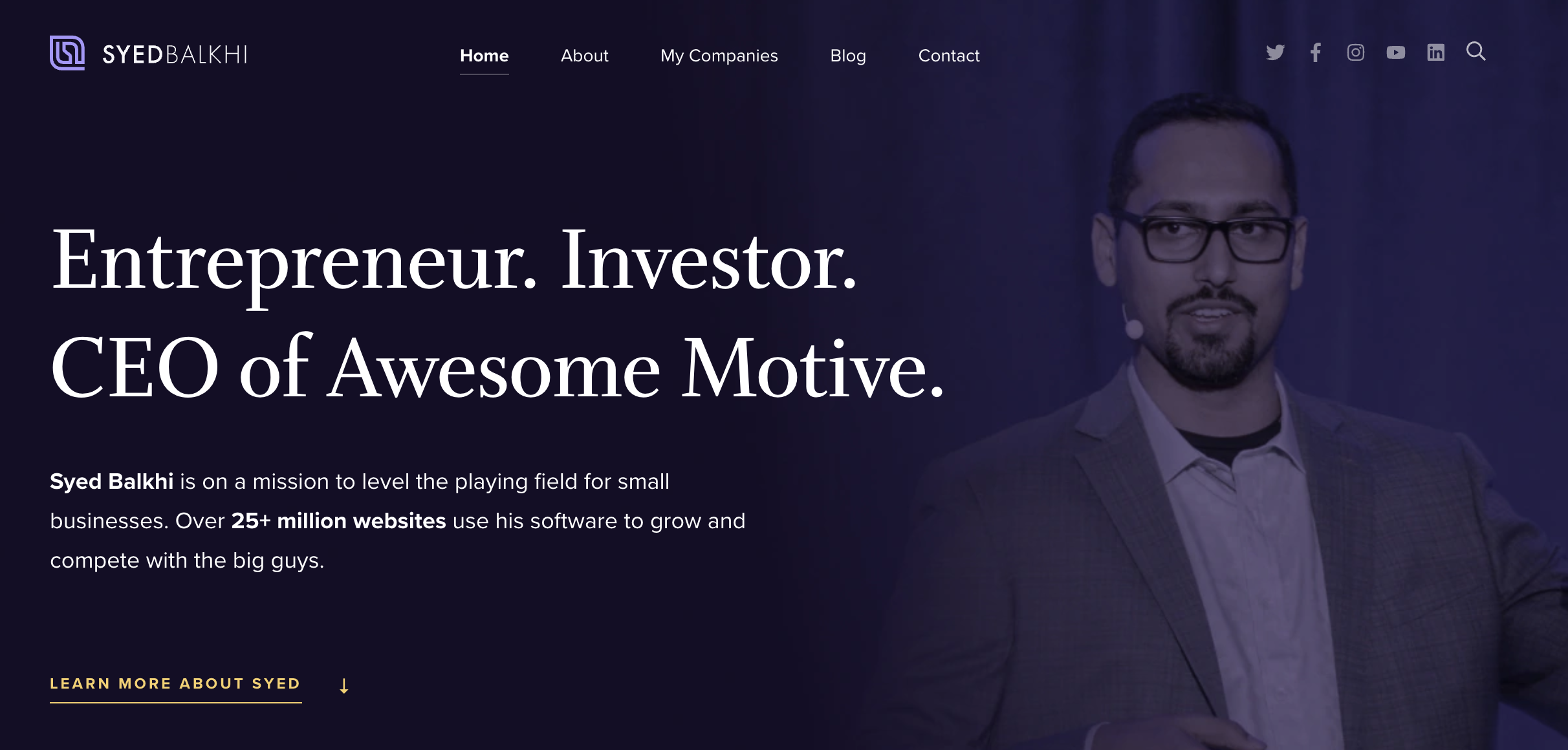
- What It’s About?
Syed Balkhi’s blog covers entrepreneurship, online marketing, and personal growth, offering practical advice and insights based on his own experiences.
- Why We Like It?
Syed Balkhi is one of the best most successful bloggers of all time. He founded WPBeginner in college, then OptinMonster, and now runs Awesome Motive – his parent company for 50+ WordPress plugins and other businesses that power 25+ million sites.
He shares his expertise with clear, actionable tips and a friendly, approachable writing style.
The blog is well-organized and stands out for its unique focus on simplifying complex topics, making valuable information easy to find and understand.
Mr. Money Mustache
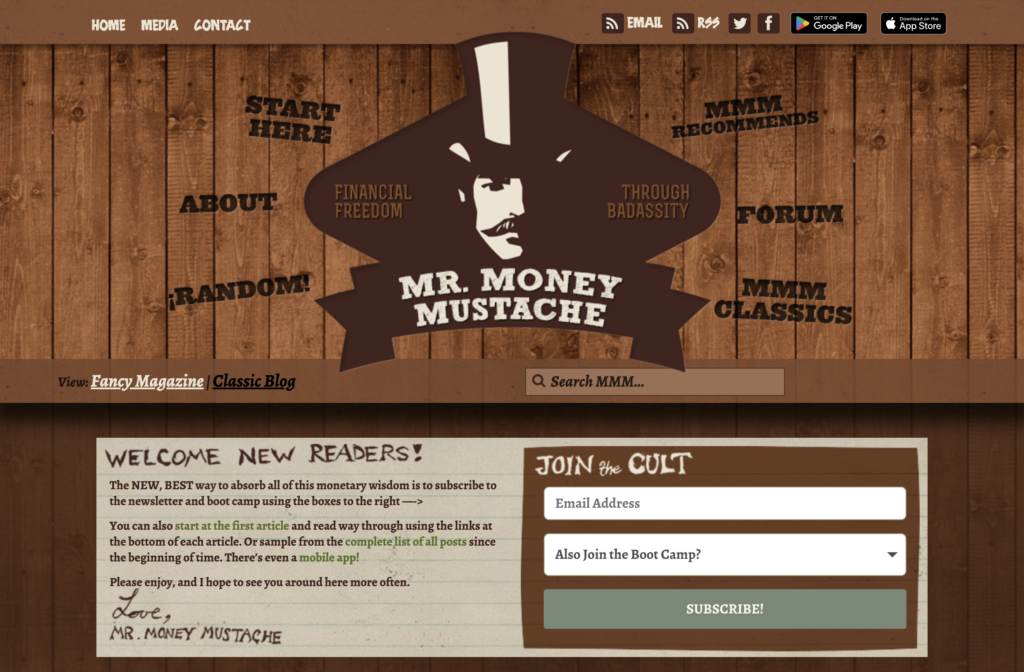
- What It’s about?
It’s one of the top personal finance blogs. It’s written by a retired software engineer, Pete Adeney, who achieved financial independence by age 30.
And on his site he shares personal experiences and practical advice on living a frugal, efficient lifestyle to achieve early retirement and financial freedom.
- Why We Like It?
Mr. Money Mustache’s blog focuses on financial independence, early retirement, and frugal living, offering strategies and tips for saving money and living efficiently. Who doesn’t love that?
The blog offers practical advice with a no-nonsense approach to achieve this, making financial concepts easy to understand and act on.
We especially appreciate his promotion of sustainable living, which he backs up with real-life examples and success stories.
Gill Andrews
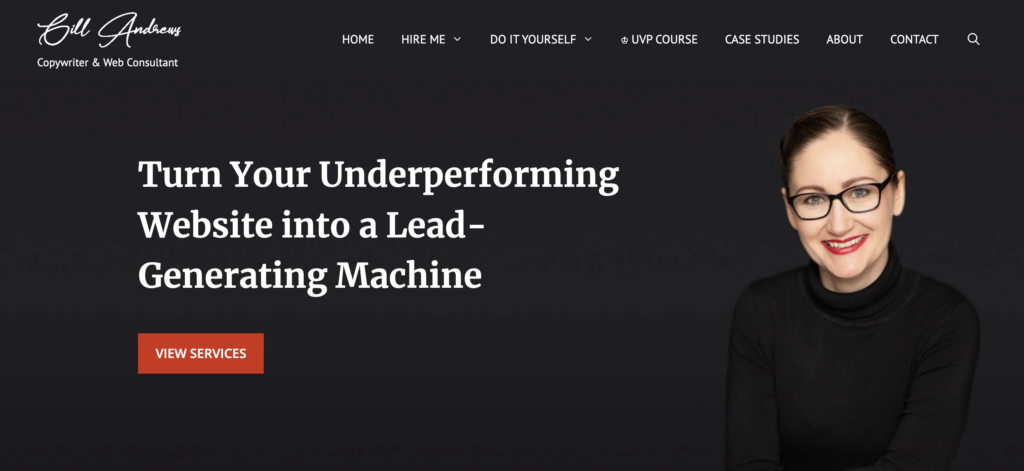
- What It’s About:
Gill Andrews is a writer and content expert focusing on copywriting, writing tips, and improving website content. Gill helps readers understand how to create compelling stories and effective content for their websites.
- Why We Like It:
The blog offers practical advice on crafting engaging stories and improving content quality.
Its unique value comes from Gill’s approachable writing style and ability to break down complex concepts into easy-to-understand steps, making it perfect for beginners and experienced writers.
Neil Patel
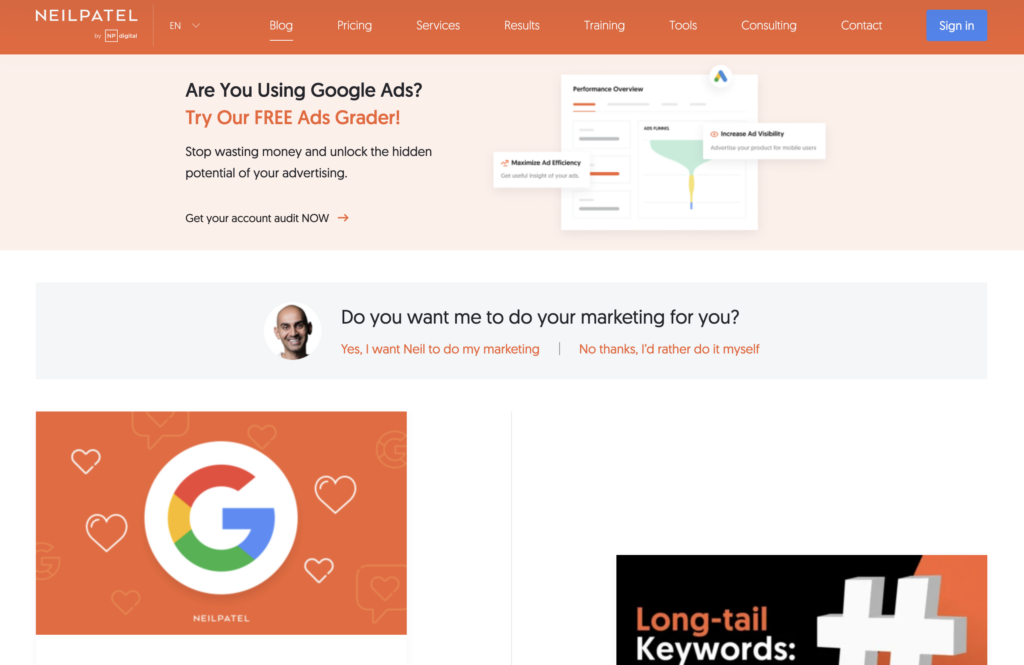
- What It’s About?
Neil Patel is a renowned entrepreneur and online marketing expert. He is a co-founder of companies like Crazy Egg, Hello Bar, and KISSmetrics. His blog focuses on digital marketing, SEO, and content strategies to help businesses grow online.
- Why We Like It?
Practical, actionable advice with detailed how-to guides and real-world examples. Its unique value lies in Neil’s deep expertise and the wealth of free resources, like tools and templates, that help readers implement effective marketing strategies.
The Broke Backpacker
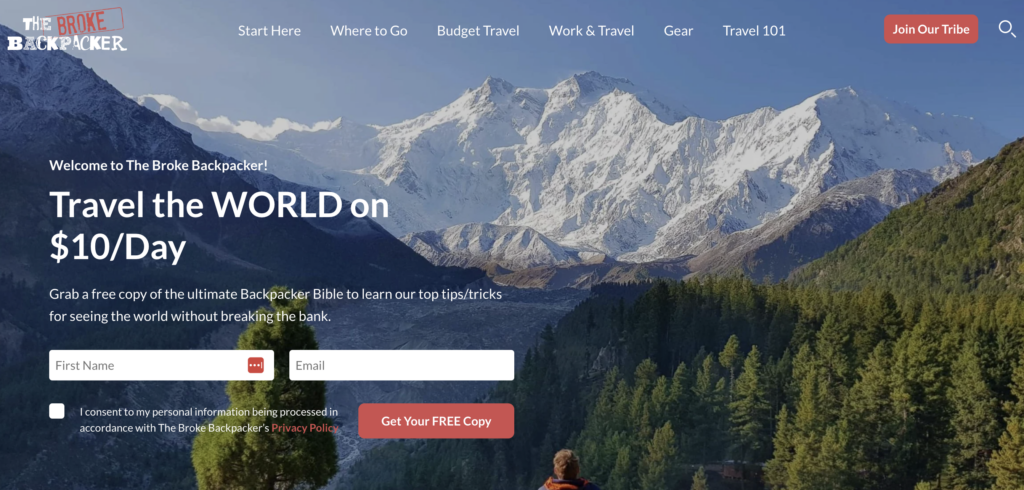
- What It’s about?
The Broke Backpacker is a travel blog that focuses on budget travel. It offers tips, guides, and stories for travelers looking to explore the world without spending a fortune.
- Why We Like It?
Started by adventurer Will Hatton, the blog provides practical advice on traveling cheaply, with a strong emphasis on adventurous and off-the-beaten-path destinations.
Its unique charm lies in its personal, relatable stories and the fearless, can-do attitude that inspires readers to embark on their budget-friendly adventures.
What do all these blogs have in common?
In our next section, I’ll reiterate a list of the elements of a successful personal blog.
What Makes a Personal Blog Successful?
We’ve covered a lot of the common traits of successful personal blogs above but let’s really nail it home here.
Here are the key ingredients to cook up a successful personal blog:
Passion and Niche Focus
You really have to choose a niche that you are passionate about. Bonus points if you can bring a unique perspective.
The best personal blogs find the right balance between personal and niche focus. Why? Because focusing on one specific niche leads to deeper connections with your audience.
High-Quality Content
Every piece of content must be high-quality, engaging, grammatically correct, and original.
Be selective in the topics you cover and only write about areas where you can add unique value.
Consistent Posting Schedule
Posting good content frequently is important to keep your audience engaged.
The ideal posting frequency depends on your audience, but a couple of posts per month is a good starting point.
Simple Design and Branding
We believe in the abbreviation K-I-S-S. Keep it simple, sexy!
A simple, uncluttered design with a consistent color scheme helps your blog stand out. Incorporating personal touches like custom photography helps build a unique brand.
Audience Engagement
You can collect email addresses to build an email list and stay connected with your audience.
An email list is something you own and can be used to promote any products or services you may want to offer.
For this, you’ll want a lead magnet that entices visitors to sign up for your list and stay in touch.
Here’s a great example from Leo Babauta, founder of Zen Habits, a personal blog sharing advice on mindfulness and meditation breath work.
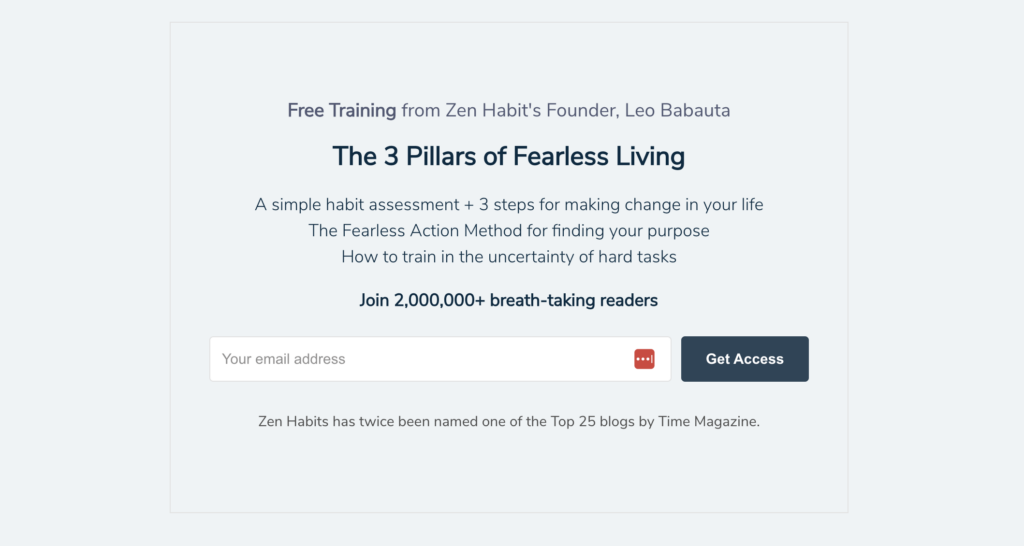
You’ll also definitely want to be active on social media to promote your content, interact with readers, and stay top of mind with your network/target audience.
Your readers will like it, and Google’s algorithms will typically reward you for the diverse referral traffic to your site.
Monetization Strategy
You should have a clear plan for monetizing your blog, whether through ads, affiliates, products, or services.
The Future of Personal Blogging
The future of personal blogging is bright, despite the rise of short-form social media content. Here’s why:
Personal Blogs Still Provide Value
Personal blogs continue to be a great way to share your experiences, expertise, or creative work.
And they offer a unique space for deep discussions and thought leadership that short-form content doesn’t give.
Leveraging AI and Technology
New technologies like voice search, AI, and virtual reality are changing how content is created and consumed.
AI tools can streamline your workflow and improve your writing, but your unique voice and personal touch are still essential.
So don’t expect AI to write your whole posts for you. The quality lacks the panache of a human writer. Google might penalize you. And your readers won’t stick around for long.
But the rise of AI is definitely going to shape blogging.
There are already plenty of tools like Chatgpt, Zimmwriter, Claude.ai, and Perplexity.ai enhancing content creation and even how some navigate the internet.
And more and more tools will help with personalization, making blogs more tailored to audience preferences.
Final Say on How to Create a Personal Blog
You now have the basic building blocks for creating, promoting, and publishing content on your own successful personal blog.
Use the steps in this article to guide you. Feel free to adapt, iterate, and add your own ideas to the process.
No matter your niche, a well-planned and sincere personal blog can connect you with your audience and open up new opportunities.
Your successful personal blog is ready and waiting for you to build it!


0 Comments
Join in. The comments are closed after 30 days.